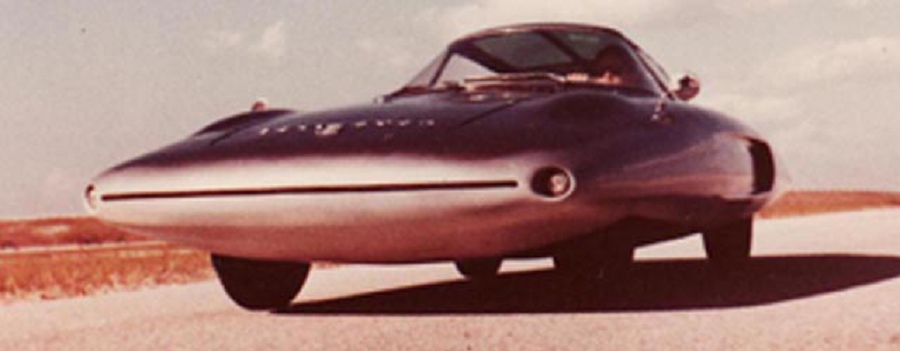
Hi Gang…
My first fiberglass car was a Shark – a convertible Shark at that. Little did I know that the path I would embark on as a young man would be so adventurous in later life 🙂
Back about 30 years ago, I cut my teeth doing research on the car I had found, and met good friend Rick D’Louhy in the process. Today’s article is one of many things I learned from the fruits of my labor.
By early ’62, Henry Covington’s “el Tiburon” was fully prototyped, designed, tested, and being produced. In fact, the first six bodies had already been laid up by the Cacciatore Family and their company “Cacci-Craft” in Tampa, Florida. Very exciting times for Henry Covington and his prototype sports car – The Shark.
Let’s see what the Sunday Independent Newspaper had to say about this futuristic Florida design by Henry Covington in early ’62.
Tiny Car With Wee Motor Proves Big Engines Not Needed For Speed
The Sunday Independent, St. Petersburg, Florida
Sunday March 25th, 1962
By Paul Mitchell
He built a car to prove a point – it doesn’t take brute power to go fast.
Streamlining and light weight are the answers to “drag”, the enemy of speed, contents Henry Covington, a soft-spoken North Carolinian who is an industrial designer and a “car bug.” His “fans,” including his wife and two sons, James, 15, and John 13, 3547 58th Avenue North, dared him to prove Detroit wrong in cramming bigger and bigger engines in cars going slower and slower with proportion to overall weight.
Covington, a tall, friendly man who wears horn-rimmed glasses, built a radically different car. It looks like a shark. He calls it “El Tiburon”, Spanish for the man-eating shark. The name was suggested by a salesman of sharkskin leather goods.
“My sole aim was to prove a favorite point,” Covington said. “It takes very low horsepower in an engine to attain relatively high speed in a car – if you reduce ‘drag’ caused by air passing over the vehicle.” El Tiburon I, well-known to thousands of Pinellas car fans, proved the point.
Powered only with a tiny, 19 horsepower Renault 4CV overhead valve motor in a modified Renault chassis, the shark-like two passenger car has attained 78 miles an hour. “We put in a larger, 45 horse motor from a Renault Dauphine and shoved her up to 122 miles an hour,” beamed 15 year old James Covington, student at Dixie Hollins High School.
“I was riding with dad when he got her up to 122mph,” he added. “We might have gone faster, had not the nose mold started vibrating badly. We’ve strengthened it since then.” “El Tiburon’s” namesake, the shark, is nearly hydro-dynamically perfect, presenting a minimum of resistance to water as it swims.
By borrowing the design, Covington produced an aero-dynamically adapted land vehicle holding much promise for future car design. “Air resistance,” Covington said, “increases with the square of the speed. This means that twice the speed produces four times the resistance and three times the speed, nine times the resistance.
My object was to show that cutting down drag is the key to speed – rather than boosting power to a wind-resistant shape. My car proves the point.” Covington first made a small balsa wood model of his “dream car”. He cut the model into sections and traced them on graph paper.
“Then we took up te living room rug, pushed back the furniture and made full scale drawings,” he said. These were traced on plywood to form a frame covered with wire lathe. He made the initial mold for the fibrous body by plying plaster of Paris to the frame and coating it with automotive primer to get a smooth surface.
The next step was to coat the mold with a “parting film”, a release agent, to separate the mold from the fibrous material used to cast the body shell. The mold was then covered with layers of resin and glass cloth to form a “female” mold from which the whole process is repeated to produce an actual body shell.
Seventeen separate molds comprise the body. Separate molds were used to cast the distinctive air scoops, recesses for directional lights, and so forth. “The car was never designed for mass production,” Covington said. “In fact, it takes a week to mold one body. The shell must be rotated to prevent “sagging” until fully cured.
Big credit for the body mold, Covington said, goes to a neighbor and friend, Glen Gums, 5698 36th Avenue North, a plastics engineer. Covington tested the odd looking car over Pinellas County for more than a year. Once he broke an axle. Its appearance on downtown streets always causes a sensation.
“So many people stop at the house when they see it in the yard, we had to move it around back to get privacy.” He said.
National publicity in magazines like “Road & Track” and a current front page picture in Mechanix-Illustrated led to a daily influx of fan mail. “Some inquiries come from Royal Air Force members and people in South Africa,” son John said.
Sundays and holidays are worst when “El Tiburon” is spied alongside the garage. Curiously elderly people stop and ask questions. Young people – more familiar with the ultra-streamline design – ask technical questions. By sundown, the Covingtons are exhausted.
“Just let us drive into a gas station and business flourishes,” John said. The youth demonstrated how you enter the car by “unbuttoning” the glass airplane type canopy. You lower yourself into contoured seats – swinging the steering wheel on a rack to gain room for your legs.
In traffic, you’re so low you can see daylight under ordinary sedans. Coming up behind a 10-ton cross-country trailer or bus you feel like you’re looking down the Holland Tunnel. The “Shark” is some car. The designer and builder poured about $4000 into his proof that Detroit is on the wrong road in the horsepower race.
Summary:
The Shark continues to draw attention no matter where it goes – most recently at the Milwaukee Masterpiece Concours d’ Elegance. Click here for more stories and photos of this appearance in 2010.
Hope you enjoyed the story, and until next time…
Glass on gang…
Geoff

——————————————————————-
Click on the Images Below to View Larger Pictures
——————————————————————-
- Henry Covington at A Family Picnic in the Late ’50s.
- “Hiding” The Shark In The Covington’s Backyard – Late 1961.
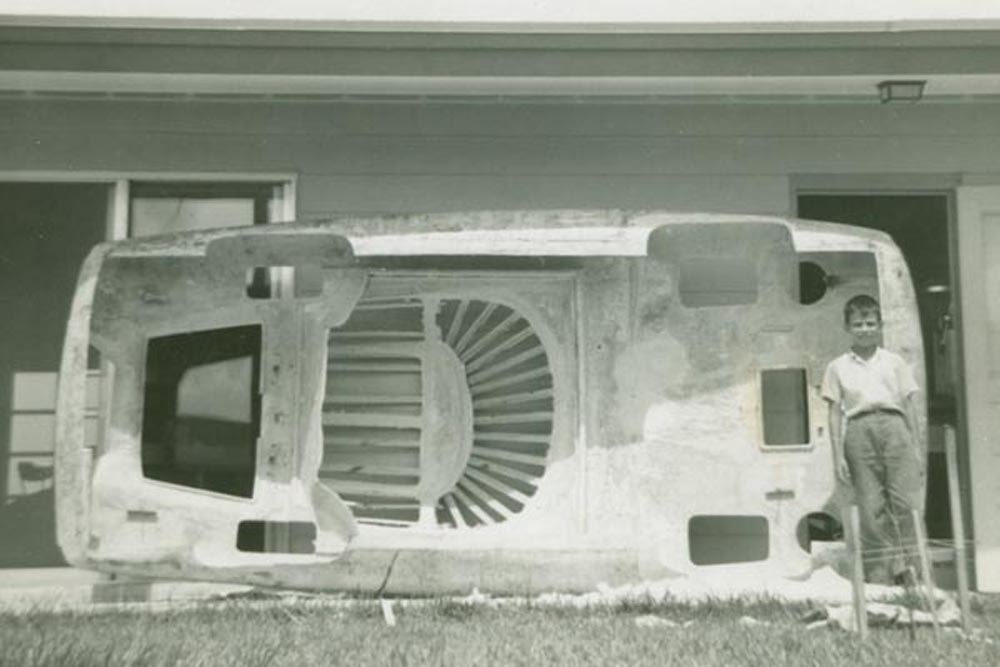
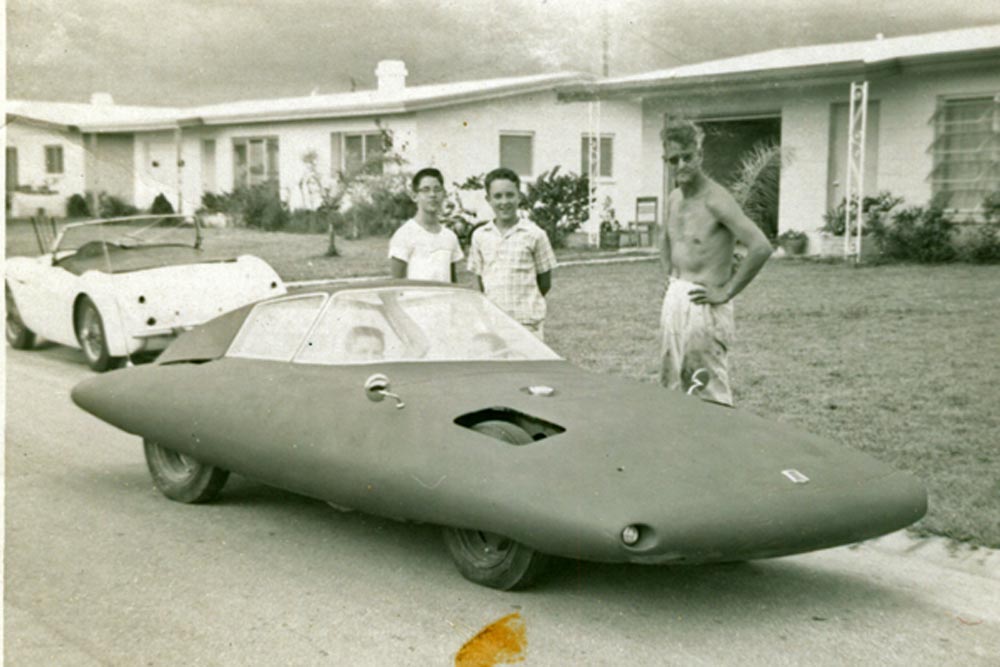
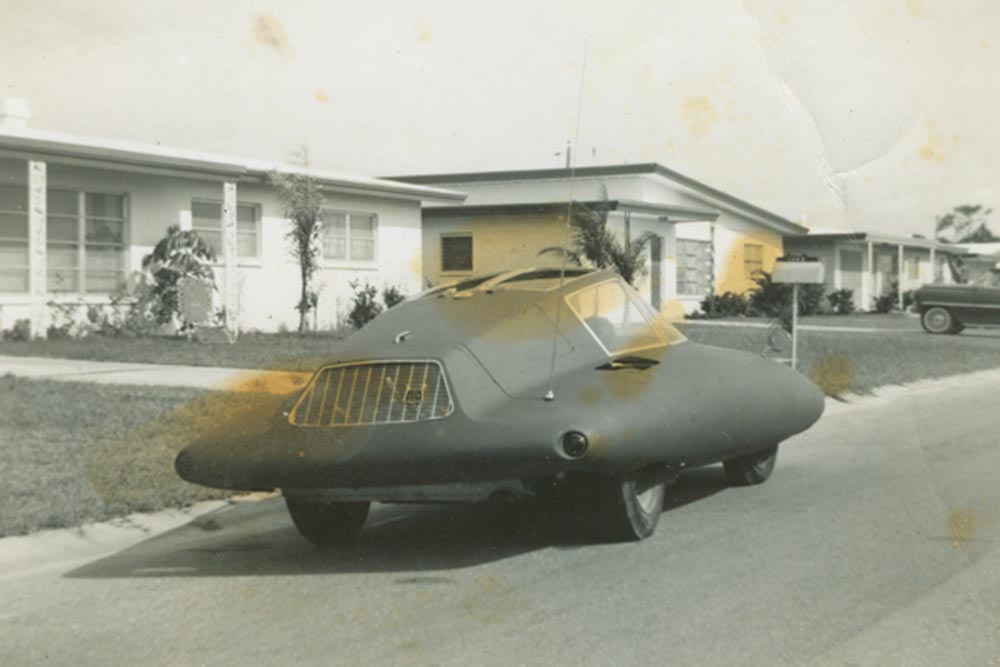








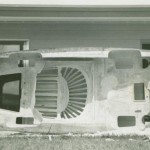
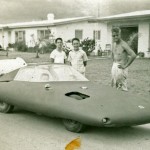
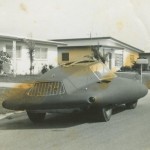
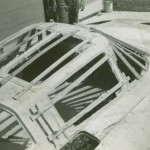
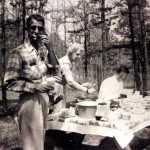

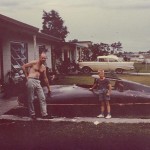
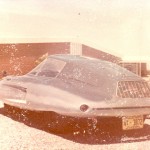
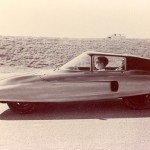
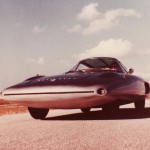


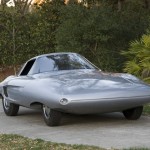
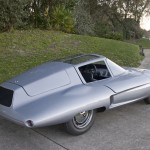
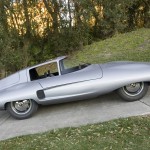
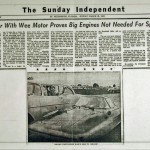
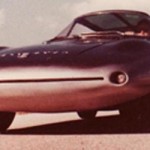
Geoff,
So much fun to look at these pics. Thanks for all your efforts and for sharing. As you know my grandmother is still in that house so it is especially cool to see all the action that happened there. I wish he was still around, that I had an El Tiburon, and maybe that Austin Healey too.
Recalling the day that you, Geoff, ,Jack Woolridge, Bill Jackson and I were at the museum in Tampa, retrieving your Kurtis Omohundro for show at Amelia Island,
we all were also in awe of your Covington Shark
Last August, at The Milwaukee Concours d’Elegance, when my wife’s brothers, Crane and Donald Rock, carted me and my Macaroni Monza/Almquist to that event, I was even more in awe that your Covington Tiburon was there . . . my car parked next to it . . . then later, the Bosley arrived from the Petersen Museum in La Ca . . . and completed a trio of . . . . what Bill Jackson and Gordon Buehrig described in their co-authored book . . (as) . . “Rolling Sculpture” . . .
You have greatly honored Harry Heim and all of the people whose lives he has enhanced.
Like many others I never tire of the Shark, what an amazing little car. Proving quite clearly that big is not always best…
This car was done by a true artist,,love the way the design flows..
Mel
Interesting comment about the size person the Tiburon was designed for. I have no trouble sitting in it; my sitting height is short, but my legs are long. How tall was Henry; in the pics he looks pretty tall?
Great car and story. Again, it was designed for a person 5′-6″ to 5′-8″ or so, like the Kellison and many others. Thanks for letting me squeeze into it at the Milwaukee Concourse! What fun that was.
Thanks so much for including me on this email. I was watching a PBS program last night about sharks and there was a frontal face shot where I thought: That’s H.B.’s car!
I think the family picnic photo may have been made a little later. I have a copy; I will try to check the date stamped on it. That’s Tom, his brother, seated, and “Aunt Elsie (Snipes Covington,” wife of Buren Covington, H.B.’s uncle.
Good story. Wonderful photos. For others reading this: “H.B.” is the name Henry had when he was growing up and in the Covington family.
Love all the great old family photos, you have outdone yourself!
~ what an experience for a 15 year old; 122 mph in the car your father built entirely by himself?
my appreciation for this piece of art & technology grows each time you refer to it. (her? him?) brings fond memories of first auto forays in early dauphine as well. were you ever able to make contact with henry or family members? or with paul mitchell?